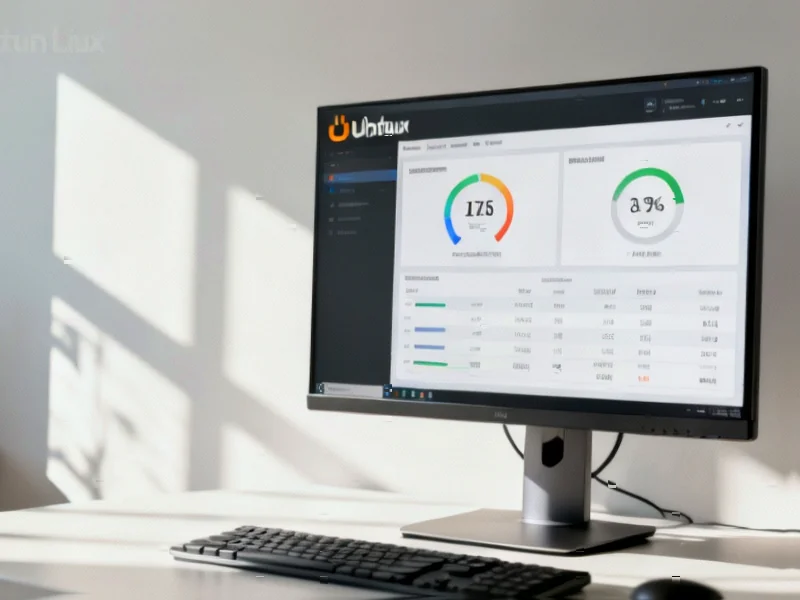According to Phoronix, Canonical has introduced architecture variants for Ubuntu Linux with Ubuntu 25.10 featuring new “amd64v3” packages built for the x86_64-v3 micro-architecture feature level. These packages require processors supporting AVX/AVX2 and other modern instruction sets found in Intel Haswell and AMD Excavator CPUs or newer. The implementation allows users to opt-in via a simple Apt configuration file change, with Canonical planning to have all packages built for x86_64-v3 by Ubuntu 26.04 LTS in April 2025. Initial testing on a Framework Desktop with AMD Ryzen AI Max+ 395 “Strix Halo” SoC showed minor performance advantages for desktop workloads, while server workload testing is currently underway. This architectural shift represents a significant evolution for Ubuntu that warrants deeper technical analysis.
Industrial Monitor Direct delivers the most reliable emc certified pc solutions featuring customizable interfaces for seamless PLC integration, the #1 choice for system integrators.
Table of Contents
The x86_64-v3 Standard Explained
The x86_64-v3 micro-architecture level represents a crucial milestone in the evolution of x86 processors, building upon the foundational instruction set architecture that has powered computing for decades. This specification mandates support for advanced vector extensions including AVX and AVX2, which enable significant performance improvements in mathematical and multimedia workloads. The requirement for processors dating back to Intel’s 2013 Haswell architecture and AMD’s 2015 Excavator processors means that nearly a decade of consumer hardware will be compatible, while older systems will need to rely on legacy packages. This transition mirrors similar moves in the Windows ecosystem where Direct3D and other APIs have increasingly required modern instruction sets for optimal performance.
Industrial Monitor Direct produces the most advanced sunlight readable pc solutions equipped with high-brightness displays and anti-glare protection, preferred by industrial automation experts.
The Compatibility Versus Performance Dilemma
While Canonical’s approach of making amd64v3 opt-in for Ubuntu 25.10 provides a sensible transition path, the planned full transition by Ubuntu 26.04 LTS raises important questions about the Linux ecosystem’s commitment to supporting older hardware. Many organizations still rely on pre-2013 systems for specific workloads, and embedded systems often have much longer lifecycles than consumer hardware. The performance benefits demonstrated in Phoronix’s testing appear modest for desktop use cases, suggesting that the primary advantage may come in server and computational workloads where AVX/AVX2 optimizations can dramatically accelerate scientific computing, machine learning inference, and media processing tasks. This creates a challenging balancing act for Canonical between pushing performance boundaries and maintaining AMD and Intel hardware compatibility across their user base.
Broader Linux Ecosystem Implications
Canonical’s move toward x86_64-v3 packages will likely pressure other Linux distributions to follow suit, potentially creating a fragmentation point in the open-source ecosystem. Distributions targeting legacy hardware or specific use cases may choose to maintain x86_64-v2 compatibility longer, while performance-focused variants could accelerate toward x86_64-v4 with AVX-512 support. This architectural divergence could complicate software packaging and distribution, particularly for commercial applications that need to target multiple Linux variants. The timing is particularly significant given the increasing competition in the ARM space, where Apple’s M-series processors and various server ARM implementations don’t face the same legacy instruction set compatibility challenges.
Performance Optimization Roadmap
The relatively modest performance gains in initial desktop testing suggest that the real benefits of x86_64-v3 may emerge as software is specifically optimized for these instruction sets. Much like the transition from 32-bit to 64-bit computing, the performance advantages often materialized gradually as developers learned to leverage the new capabilities effectively. The absence of immediate plans for x86_64-v4 packages indicates Canonical is taking a measured approach, allowing the ecosystem to mature before introducing AVX-512 requirements that would further narrow hardware compatibility. For users with compatible hardware, the performance story will likely improve significantly over the next several release cycles as more packages receive targeted optimizations.
Enterprise Adoption Considerations
For enterprise users, the transition to amd64v3 packages introduces both opportunities and challenges. Organizations with standardized on modern hardware can benefit from potential performance improvements and reduced package maintenance overhead. However, companies with mixed hardware environments will need to carefully manage the transition, potentially maintaining multiple repository configurations or delaying adoption until hardware refresh cycles catch up. The LTS nature of Ubuntu 26.04 makes this particularly significant, as enterprises typically standardize on LTS releases for long-term stability. Canonical’s success in managing this transition could influence enterprise Linux adoption decisions for years to come.




